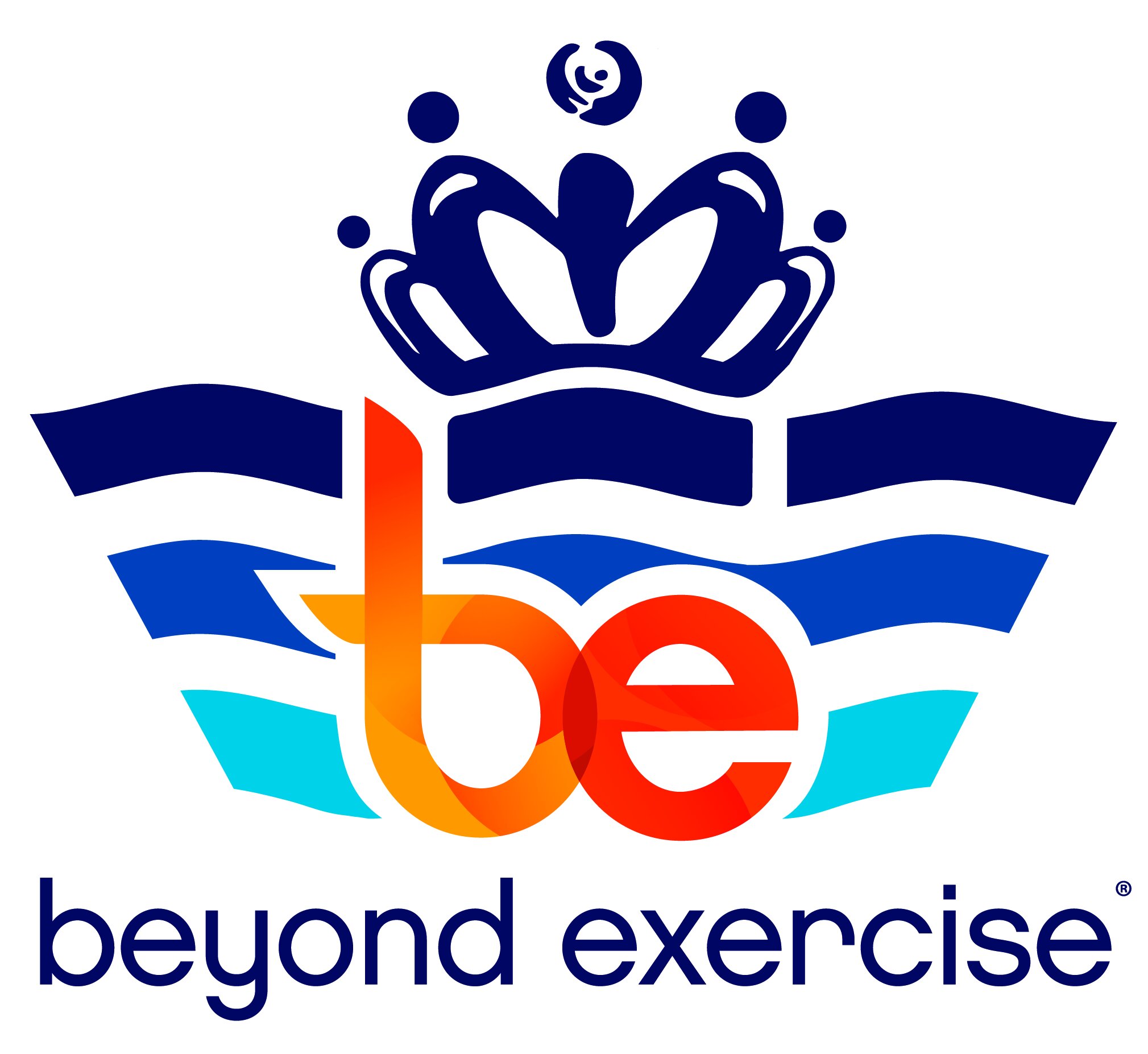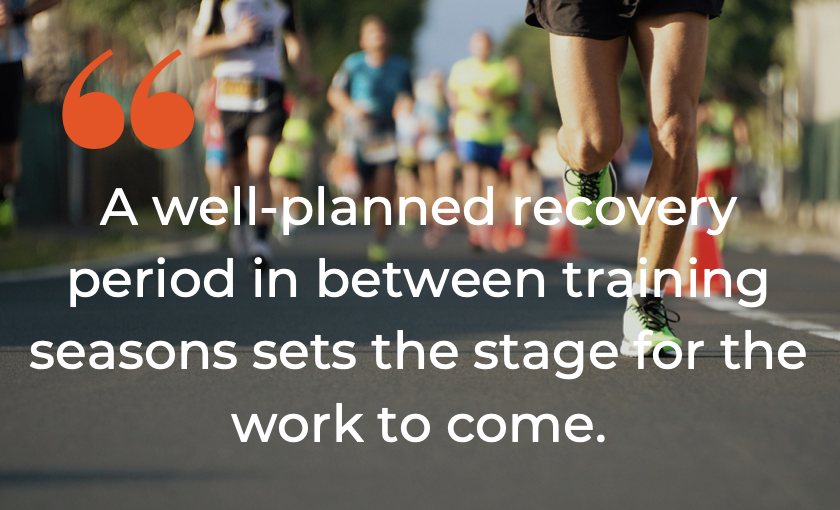Why You Should Take 2 Weeks Off After Running Your Race
by Dr. Ellen Foster, PT, DPT
You’ve put in the hard work for the last several months, and the day has finally come: your “A” race. The event that your entire training program was built around. You carefully planned every workout, tapered for the last few weeks, executed your race-day plan, and you’ve crossed the finish line! Now what?
If you are like most runners, you might start thinking about your next big race. But hold that thought! T oo many runners fail to plan their post-race recovery period. Even if you feel good within a few days, there are important physiological processes happening for up to 8 weeks after a race. Jumping back into hard workouts or a new training plan right away leaves you at risk for injury, overtraining syndrome, and stagnant performance. Take the time now to plan what the month after your race looks like!
A well-planned recovery period in between training seasons sets the stage for the work to come. Time off from running after a hard race effort allows us to come into the new season with fresh legs, mental clarity, and the ability to better tolerate high training loads. This means you’re more likely to have a breakthrough season with a new PR, rather than trying to manage the same aches, pains, and fatigue that might have plagued your last training season.
To understand why taking time off is so important, let's take a quick look at the damage a marathon can do.
What happens to the body after a marathon or half marathon (Why you need to prioritize recovery):
Muscles and Tendons - Even after DOMS (delayed onset muscle soreness) has subsided, scientific studies have shown cellular damage in muscles as late as 8 weeks after a race (1, 2). Even though your muscles and tendons may feel ok, they are still repairing themselves at the cellular level.
Kidney Function - Research has shown that most amateur athletes have signs of kidney dysfunction after a marathon due to stress and dehydration. It may take up to several weeks for your body to regulate your kidney function (3).
Immune system - Cortisol and other stress hormones remain elevated for up to three days after a marathon, leaving you vulnerable to contracting a virus like the common cold (4, 5), further delaying your return to running.
Your Four Week Recovery Plan
Week 1
Activity level: No running! Gentle movement.
Immediately post race: Avoid the urge to sit down. Keep walking while you refuel with snacks and sip water in the first 30 minutes. Once you make it back to your house or hotel, take a cool shower or bath to aid in healing and reduce inflammation. Cold water immersion will help decrease intracellular swelling and fluid retention in your legs. Now is the time for those fancy compression socks as well!
Days 1-3: Sleep! Get 8 hours of sleep, and take a nap during the day if possible. Gentle stretching and foam rolling along with 10-15 minute walks will help with blood flow and tightness in the initial days following your race. You can begin taking warm baths or showers, as well as using contrast baths - alternating warm and cool water - to further promote healing of your muscles.
Days 4-7: Continue stretching, foam rolling, and walking. If soreness is starting to subside, a short, easy recovery spin on the bike is a good way to get moving.
Week 2
Activity level: No running! Gentle movement and light cross training. Recovery massage.
Yes, you read that right - a second week of no running. By now you probably feel a bit better, and most of the soreness has subsided. And you probably feel ready to get back out there for a few easy miles. BUT, your skeletal muscles are still repairing themselves and rest should be the main component of your recovery plan this week. If you want to get moving, try a 30 minute walk or a gentle restorative yoga flow in addition to 1-2 leisurely bike rides. Now that your muscles are not as tender, a recovery massage will also aid in muscular repair. While many runners only take 1 week off running, we see in our physical therapy clinic that taking at least 2 weeks off from running results in fewer injuries and stronger runners during the subsequent training season.
Week 3
Activity level: 2-3 short recovery runs and cross training
By the third week after your race, all muscular soreness and tightness should have subsided. If anything is still feeling painful, now is the time to get an injury evaluation with a physical therapist. If things are feeling good, lace up and head out for a short run. Start with a dynamic warm-up and walk for at least 5 minutes before picking up the pace. Keep runs to 30 minutes or less this week. Alternate run days with cross-training days, but keep in mind that you aren’t trying to build fitness at this point! The goal is to maintain your fitness while your body continues to heal from the hard work of your race. You can also continue foam rolling, stretching, and incorporating self active releases.
Week 4
Activity level: Easy runs, cross training, low intensity strength training.
Continue alternating easy runs with cross training, increasing the duration of your workouts but keeping the intensity low. Runs might be 45-60 minutes if things are feeling good, but you’re still not doing tempo runs, hill repeats, or track workouts. This week is also a good time to get back in the gym to begin establishing foundational strength in the form of stability training using body weight and resistance bands.
If you’re not sure if this plan is right for you, or if you experienced a more severe injury during your training season or race, contact us to schedule a Physical Therapy session.
[Want more? Learn how to gauge and choose your appropriate running pace with these tips.]
References
Warhol, M J et al. “Skeletal muscle injury and repair in marathon runners after competition.” The American journal of pathology vol. 118,2 (1985): 331-9. https://pubmed.ncbi.nlm.nih.gov/3970143/
Hikida, R. S., Staron, R. S., Hagerman, F. C., Sherman, W. M., & Costill, D. L. (1983). Muscle fiber necrosis associated with human marathon runners. Journal of the neurological sciences, 59(2), 185–203. https://doi.org/10.1016/0022-510x(83)90037-0
Mansour, S. G., Verma, G., Pata, R. W., Martin, T. G., Perazella, M. A., & Parikh, C. R. (2017). Kidney Injury and Repair Biomarkers in Marathon Runners. American journal of kidney diseases : the official journal of the National Kidney Foundation, 70(2), 252–261. https://doi.org/10.1053/j.ajkd.2017.01.045
Nieman D. C. (2007). Marathon training and immune function. Sports medicine (Auckland, N.Z.), 37(4-5), 412–415. https://doi.org/10.2165/00007256-200737040-00036
Lakier Smith L. (2003). Overtraining, excessive exercise, and altered immunity: is this a T helper-1 versus T helper-2 lymphocyte response?. Sports medicine (Auckland, N.Z.), 33(5), 347–364. https://doi.org/10.2165/00007256-200333050-00002


